Several weeks ago, we wrote about how the 1st Marine Division used pigeons for chemical detection in the first months of the Iraq War. A rare instance of pigeons being used in modern warfare, the article has become the most popular one featured on this blog. To shed more light on this fascinating story, we reached out to former Chief Warrant Officer Stacy Jeambert for further information. As the 1st Division’s Nuclear, Biological, and Chemical officer, Mr. Jeambert was the lead advocate for using pigeons as a Sentinel Species in the leadup to the invasion of Iraq. Mr. Jeambert graciously agreed to an interview, which is reproduced below—a Pigeons of War exclusive. His responses have been lightly edited for clarity.
Q: How did you decide to select pigeons as a Sentinel Species?
A: Initially, we purchased chickens—I did this previously during Desert Storm; however, the chickens, which had been previously housed in warm chicken houses, died from exposure to the elements. As the team and I discussed what to do next, we settled on the pigeon, as they are very hardy and are used to the weather.
Q: Did you get any pushback from superiors or colleagues?
A: We received tremendous pushback from the Pentagon, specifically from General Reeves’ office. [Editor’s note: Major General (ret.) Stephen V. Reeves was the Joint Program Executive Officer for Chemical, Biological, Radiological and Nuclear Defense for the Department of Defense during this period.]
When all the chickens died, it was a huge embarrassment for the 1st Marine Division in the press. Colonel John Kelly—when I approached him about buying the pigeons—said no. [Editor’s note: At the time a Colonel serving with the 1st Division as assistant division commander, John Kelly shortly thereafter was promoted to Brigadier General. He most recently served as President Donald Trump’s Chief of Staff from 2017 to 2018]
I persisted and stated that if it was a good idea before, bad press should not make it a bad idea now. He agreed and told me to write a rebuttal for the press that I would give to the Public Affairs Office. I did, he [then] agreed, and we purchased, I believe, 220 pigeons.
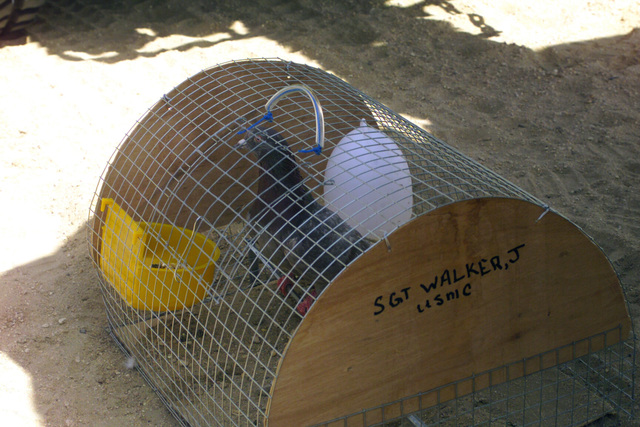
Q: How were the pigeons distributed within the 1st Division?
A: There was no real rhyme or reason as to how the pigeons were distributed—units asked for a certain amount, and we provided. We provided cages that were purpose built to be strapped on top of the Humvees and gave the units plenty of food for the birds.
Q: Were they assigned to specific individuals within the units?
A: Yes, the units did assign a Marine(s) to take care of the birds.
Q: How were the pigeons transported during operations? Did they ride on Humvees or other motorized vehicles? (one article published at the time said that wasn’t a good idea because the vibrations would disturb the birds)
A: I have no idea about the vibrations disturbing the birds, but yes, we did transport them that way—either strapped to the Humvee in the cage or [placed] inside the vehicle. It should be noted that these convoys moved very slowly; the roads into Iraq were packed during the invasion.
Q: Did any of the pigeons appear to suffer from a chemical attack?
A: No—we never lost any, either. Those pigeons were well taken care of by the Marines in charge of them and did very well.
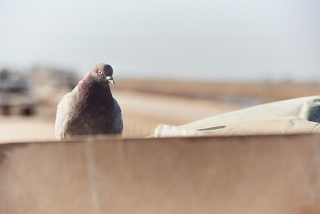
Q: After initial operations ended, what happened to the pigeons? Were they sold off, given away, or simply let go?
A: We let them out of their cages, but they kept coming back. When we had Marines go up to Tikrit, once they were on their way back, they released the birds, but they followed the trucks and would land inside them—all the way down to our staging areas in southern Iraq.
Q: Any funny or interesting stories you care to share about the pigeons?
A: One of the Marines in the 1st Marine Regiment had the cage open and was petting the bird when it just flew off. It perched itself on top of one of the communications antennas close by. I received a call, asking for a replacement—I said sure. Later that same day, when it started getting dark, the pigeon flew back down and got in its cage—we all thought this odd.
A few days later, I was walking to the chow tent, and I see the 1st Marine Division Comptroller coming toward me, yelling my name and waving a piece of paper; it was the invoice for all these pigeons. On the invoice was the description—we had purchased trained homing pigeons. I did not purchase these pigeons, I sent my Staff Sergeant, with a few Special Forces soldiers, into Kuwait City to buy these things—she had no idea, but that’s what she bought ($60 per bird).
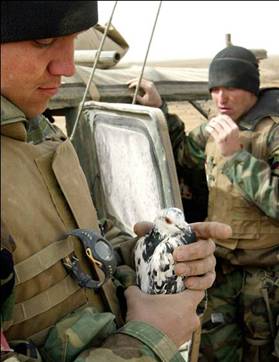
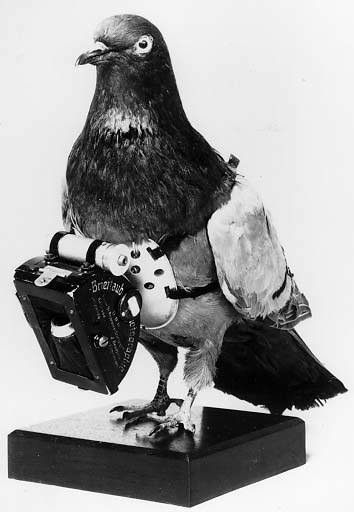
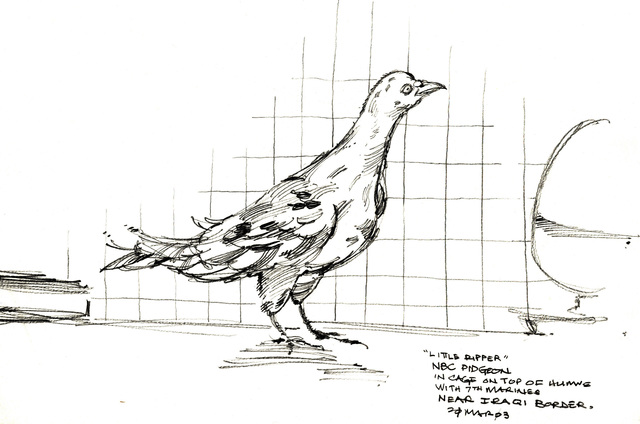
2 responses to “Pigeons in the Iraq War: Interview with Stacy Jeambert, former Chief Warrant Officer for the 1st Marine Division”
What happened to the pigeons?
LikeLiked by 1 person
I assume most became feral after the Marines let them go.
LikeLike